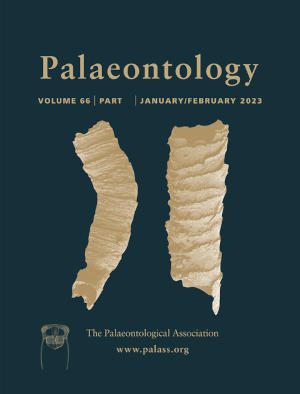Article: Taxic and morphological diversification during the early radiation of Clupeomorpha (Actinopterygii, Teleostei)
Publication: Palaeontology
Volume:
66
Part:
5
Publication Date:
2023
Article number:
e12675
Author(s):
Edna Rodríguez-Sánchez, Jesús Alvarado-Ortega, and Bruno A. Than-Marchese
Abstract
Abstract Evolutionary radiation is a problematic concept whose definition and classification have recently changed. Radiations can be defined as the pattern of abrupt increase in diversity of a lineage. It is relevant to evaluate the presence and interaction of different types of radiation in extant and fossil organisms to adequately delimitate the radiation types and to know the diversity in the context of Earth's history. Here, we employed the superorder Clupeomorpha at the Early–Late Cretaceous boundary as a study case to investigate radiation types and their interactions, using both taxic and morphological approaches. Clupeomorpha is an extensively studied, diverse and ancient teleostean superorder with wide geographical and ecological distributions. We propose a model for calculating rates of origination in order to analyse the taxic diversification and employ geometric morphometrics to analyse the morphological diversification that occurred at the temporal boundary. The results suggest the absence of taxic radiation due to a constant increase in taxon origination. However, the expansion of the phylomorphospace occupation and the disparity increase suggest the presence of a ‘climatic–geographical’ or ‘broad diversification-like’ disparity, according to current classifications. This illustrates the incompatibility of current radiation classifications with this case study.
